| Home > Policy > White Paper, Notice, Announcement > White Paper > WHITE PAPER ON SCIENCE AND TECHNOLOGY2003 > Part1 1.1 1.1.1 | ||
| (As a world pioneer) |
It is essential that Japan,which is poorly endowed with natural resources,produce high value-added products in an environment marked by technical capabilities as the basis for its survival.Japan's high economic growth was principally supported by manufacturing.Japan further improved and develop-ed technologies,which were primarily imported from abroad,by adding its own native ingenuity,thus creating significant added value for the technologies.Against such an historical back-drop,demand for human resources in science and technology rose drastically,and recruitment of science and technology students rose sharply in the1960s.
In the1980s,Japanese products swept through markets in a number of technical fields around the world.At the same time,the United States began steering a policy of patent protectionism.The world,including the United States,began criti-cizing Japan for"taking a free ride on the basic research of others,"and raised high barriers to technology imports.
In the1990s,when the world order changed drastically with the collapse of the Cold War,and which were marked by the advancement of globa-lization,Europe and the United States made huge comebacks in international competitiveness.In the mean time,Asian countries,including China,arose as principal competitors in the manufacturing sec-tor,which until then had been the pride of Japan's competitive power.Countries in Asia built up their international competitiveness on the strength of a low-wage work force,and in recent years have made striking advances in their technical level,threatening the position of Japanese business with its high cost structure.Amidst such a world scene,Japan's international competitiveness deteriorated significantly( Figures1-1-1 and 1-1-2) .
Japan has long been described as having reached the point where it must stop merely following in the footsteps of Europe and the United States and,as a world pioneer,open up scientific and technological fields.In reality,however,rather than taking the lead,Japan is losing ground to the United States in advanced technology and interdis-ciplinary fields,including IT and the life sciences (Figure1-1-3 , Table1-1-4) .Moreover,with China and other countries rapidly catching up,Japan cannot survive unless it continues to create even higher added value to compete
Entering the21st century,Japan is still in a serious deflationary slump and there is a feeling of stagnation across the country.To emerge from this economic malaise,it is considered essential to create new knowledge and generate new industries.For that purpose,developing and securing personnel who will take on the tasks of creating new knowledge and make full use of that created knowledge within society has become a major challenge.
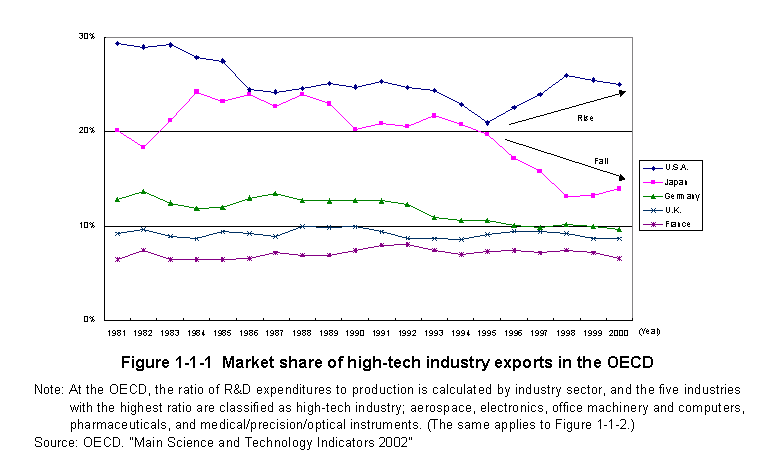
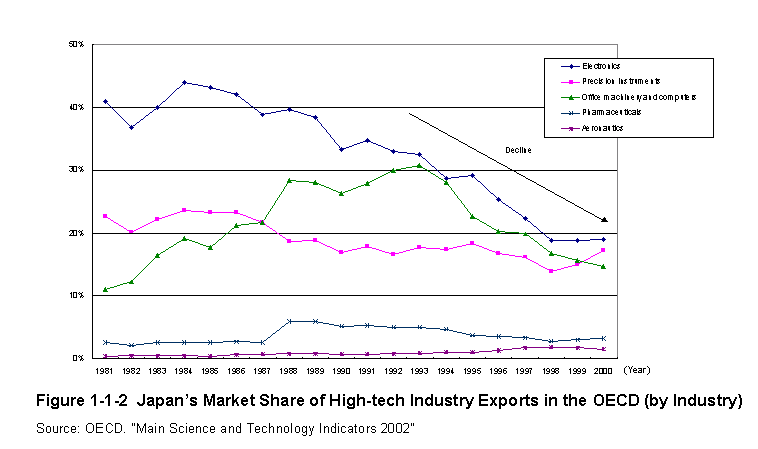
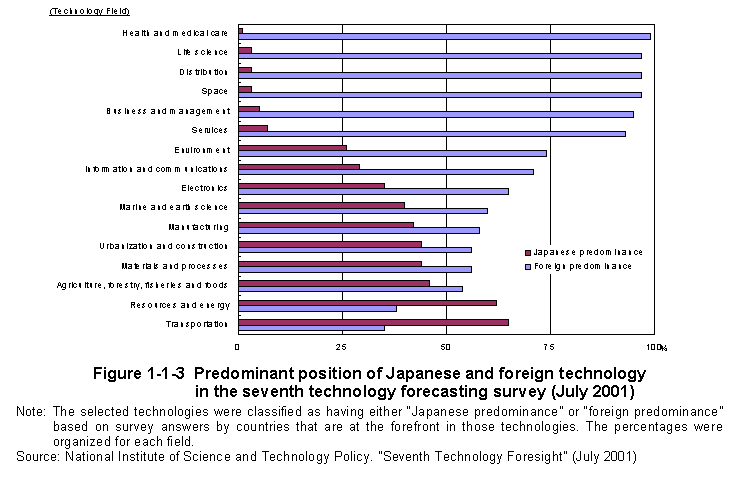
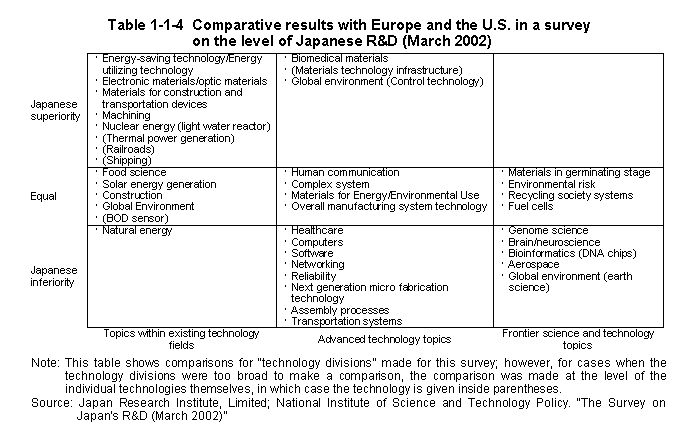
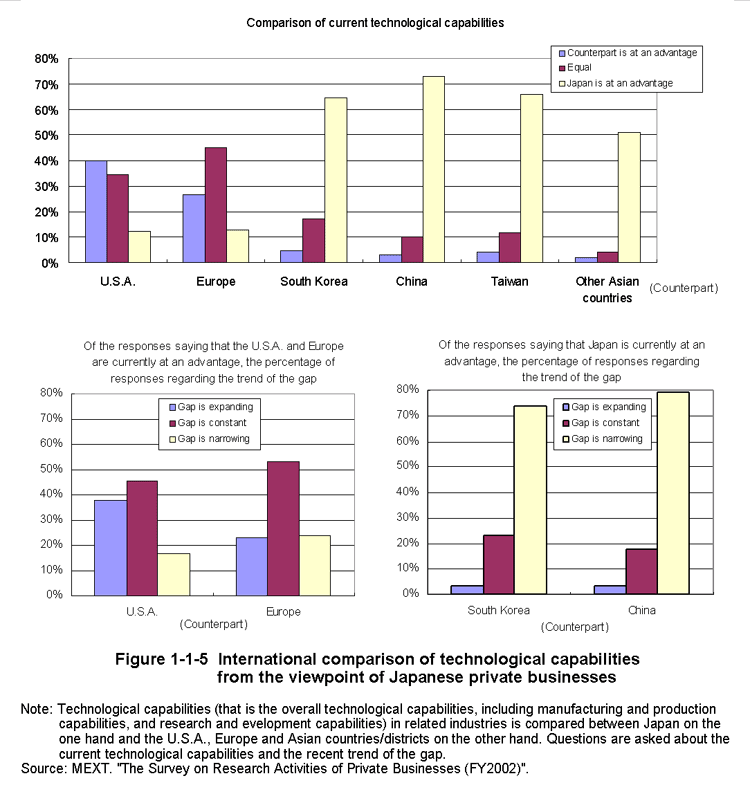
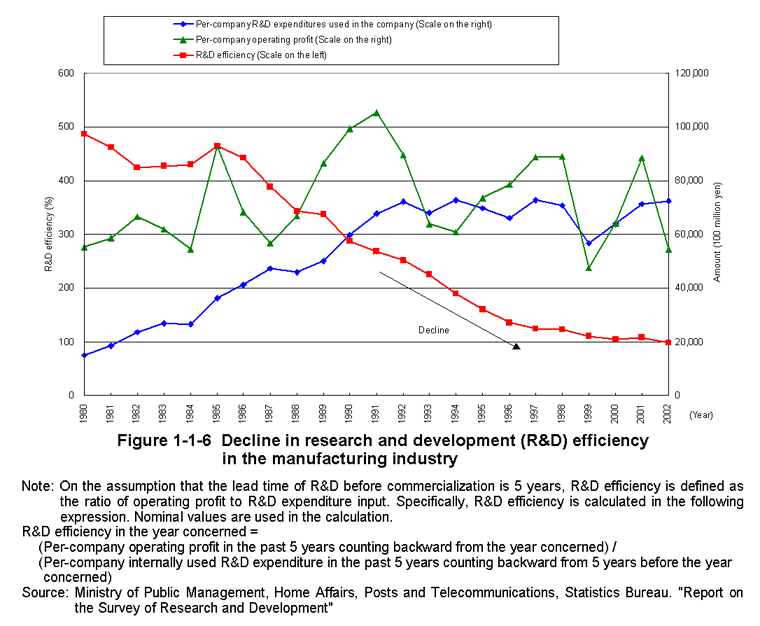
| (Effect on the aging population and the trend toward fewer children) |
Japanese society is both aging and experiencing falling birthrates at speeds unparalleled around the world ( Figures1-1-7 and 1-1-8 ).The productive age population began shrinking following a peek in1995,and thus there is concern over a decline in the vitality of society.As creativity is important in the field of science and technology,a decline in vitality,particularly through a decline in the number of younger people,can lead directly to a decline in potential in the field of science and technology.A decrease in the number of younger people can also be an obstacle to securing successsors to technologies and skills in manufacturing.
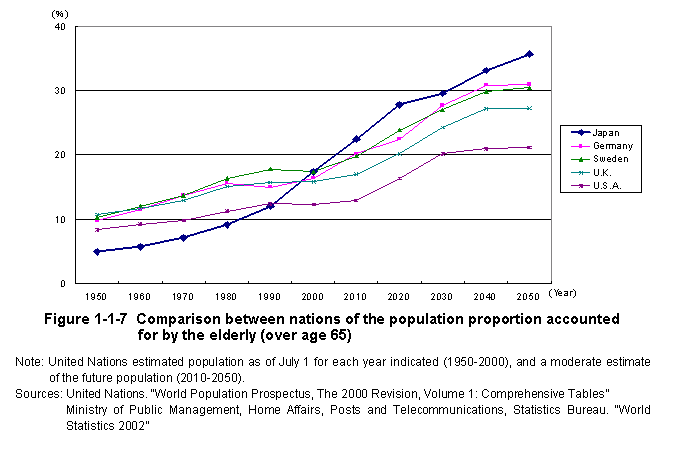
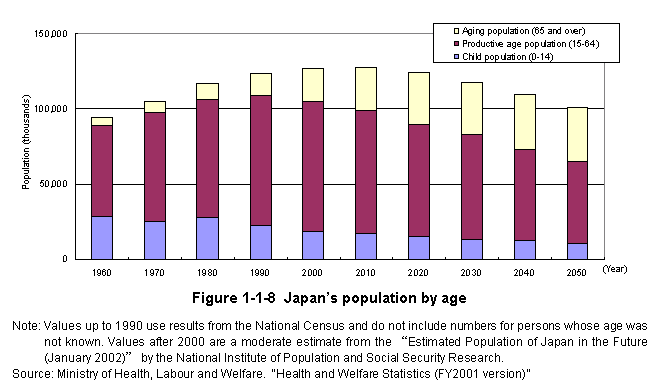
| (The increasing importance of knowledge-based occupations) |
The increasing importance of knowledge-based occupations is not a trend peculiar to Japan;modern societies across the globe are creating new knowledge centering on science and technology and making that knowledge applicable in society.The creation of knowledge-based added value is the key to economic development in an intensely competitive society where the victors are those who are quick to secure and utilize new knowledge and information.The fruits of science and technology pervade all aspects of people's lives,thus giving the appellation of a"knowledge-based society"to societies whose activities are all grounded in knowledge.
In a knowledge-based society,it is the people who create and utilize knowledge that constitute the foundation of all activities,including the production of knowledge.The importance of knowledge-based occupations is increasing world-wide,and it has become an important challenge for each nation to secure personnel who excel at intellectual labor.An examination of statistical data on each country in the International Standard Classification of Occupations compiled by the International Labour Organization reveals that the percentage of all persons engaged in"professional,technical and related occupations,"which are thought of as consisting primarily of knowledge-based workers,increased throughout the1990s in each country (Figure1-1-9) .In recent years,the expansion of globalization has brought with it frequent recruiting of professional,technical and related personnel,including researchers and technicians,across international boarders.An example is the increasing activity in Europe and the United States of first-rate information technology(IT)technicians from Indian and other Asian countries.
In order for Japan to build a richer society under the circumstances mentioned above,it is essential to foster and secure highly capable personnel who can create new knowledge and put the fruits of that knowledge to good use within society.In light of a future trend toward an aged society with fewer children,however,it is not easy to continue in-creasing,in quantitative terms,personnel engaged in science and technology.It is an urgent task,therefore,to attract high-caliber personnel into the world of science and technology and to offer an environment that allows them to excel and realize their potential.It is also important to build a society that rewards people engaged in science and technology for their efforts and the abilities they have cultivated.
| Back to Top | MEXT HOME |